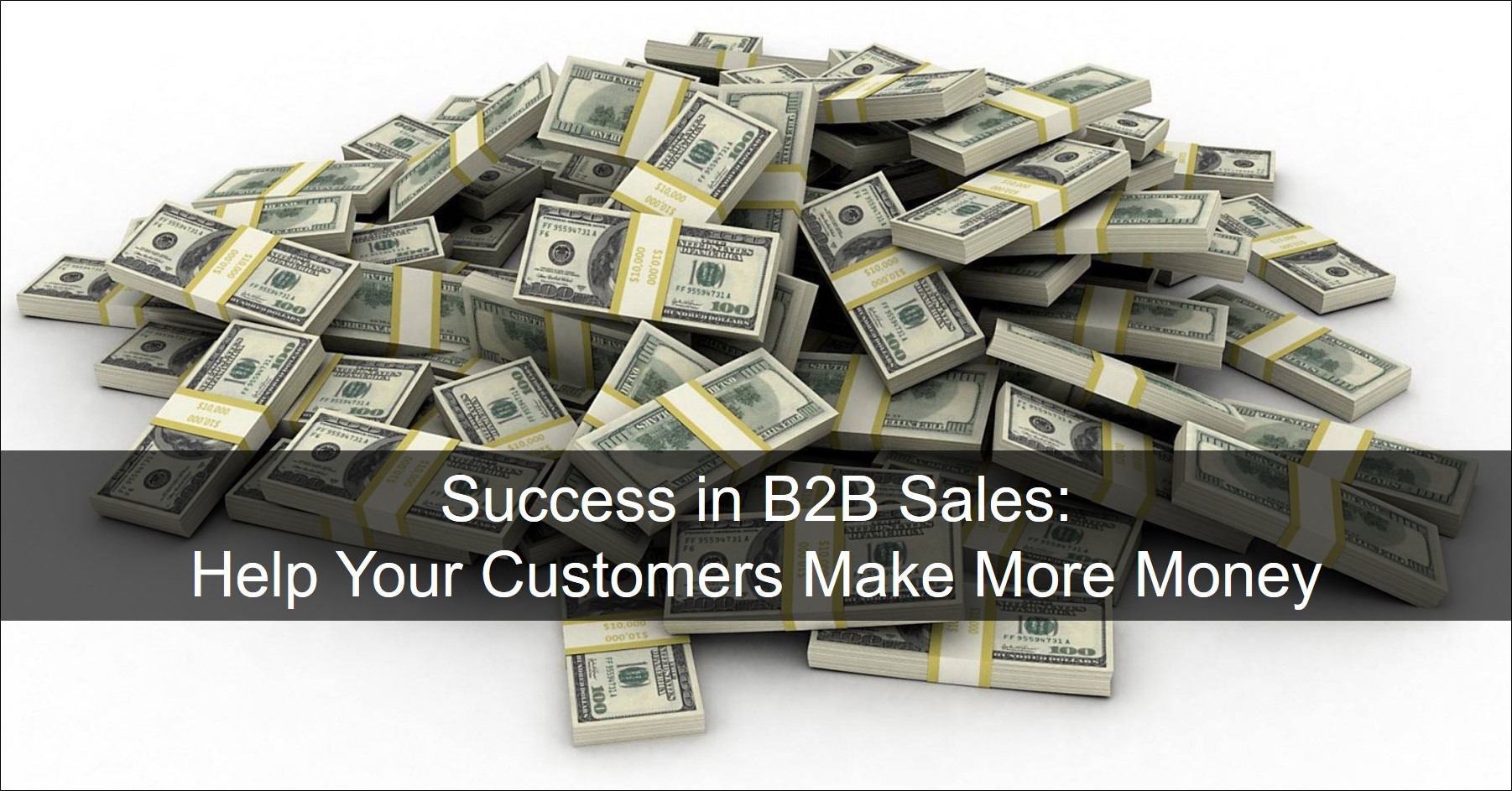
Has your organization built its marketing and sales programs around selling your product? Well, here’s a news flash. B2B customers don’t buy features and functions; they buy solutions to their problems. So not only should you be selling your solution, you should also be “selling money.”
By that I mean you should be selling your customer’s ability to make or save money using your product. I recently wrote about this phenomenon in an Amphora Consulting blog post entitled Warning: No-one Cares About Your Product! The post contends that successful B2B sales strategies focus initially on understanding the problems your product solves. Only then can you shift from selling products to selling money.
If you take these steps and answer these questions, you can successfully sell the value of your product and its ability to help customers increase profits.
Understand the Customer’s Problem
The first step is to clearly understand the problems and business challenges that your product solves for the customer. We suggest answering these questions to ensure you fully understand and address the issues at hand.
- How does the customer perceive these problems? Are your perspectives in alignment?
- How important are these issues relative to other problems they have? Can you differentiate between immediate and longer-term needs?
- What does the customer hope to achieve by solving these problems? Desired results can include cost savings, higher sales and profits, improved productivity and efficiency, and accelerating time to market.
A deep dive into understanding customer problems establishes credibility and helps customers perceive you as a trusted partner.
Quantify the Size of the Problem
In addition to determining the relative importance of a problem, you need to measure its size in terms of in terms of financial impact in currency. By quantifying the cost of maintaining the status quo, you can persuade the customer to make a purchase decision that solves the problem.
- How much is the problem costing them? This may be measured in lost revenue, underpriced products or services, and any excess labor, scrap, or other costs that can be reduced or avoided.
- What is the magnitude of the problem? Is it a $1 problem or a $1M problem? How does it compare to the magnitude of other problems?
If it is a big enough problem to matter, then you need to help the customer understand the magnitude of the problem. We recommend using value calculators to estimate the financial impact of the problem on their business.
Quantify the Value of the Solution
Here’s where “selling money” takes center stage. You’re already determined how much the problem costs. Now it’s time to prepare a business case that shows, in dollars and cents, how much they can gain from implementing your solution.
This is essential for gaining acceptance from the buying committee as well as budget approval from the financial decision makers. Typical financial metrics in the business case include net present value, ROI, and payback period.
Using a well-populated ROI tool can generate realistic projections that balance the cost of the solution with the resulting gains. And it makes it easier to discuss price once the customer value is established. By contrasting the cost of “business as usual” with projected financial results, your customer will have the confidence to move forward.
Conclusion
Follow these three steps to sell the value of your product and its ability to make money for your customers: understand their problems, calculate the cost of inaction, and project how your solution can make or save money for the customer. Present this information in an accurate, professional business case and you will shorten the sales cycle and improve your sales close rates.
Resources
Connect with Darrin Fleming on LinkedIn.
Join the Value Selling for B2B Marketing and Sales Leaders LinkedIn Group.
Visit the ROI Selling Resource Center.








